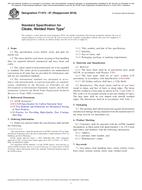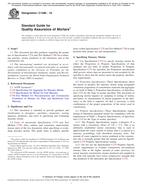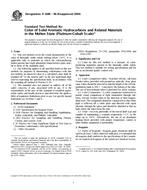1.1 These test methods determine the ability of sliding door assemblies to restrain, delay, or frustrate forced entry.
1.2 For purposes of these test methods, sliding door assemblies are defined as described in 1.2.1-1.2.4 and as shown in Fig. 1. Sliding door assemblies with a combination of operable panels and fixed panels (lites) shall be classified and tested separately for each type.
1.2.1 Type A – A sliding door assembly which incorporates one or more sliding panels that lock to the jamb.
1.2.2 Type B – A sliding door assembly which incorporates one or more sliding panels that lock to an intermediate jamb.
1.2.3 Type C – A sliding door assembly which incorporates one or more sliding panels that abut and lock to other panels.
1.2.4 Type D – A sliding door assembly which incorporates one or more fixed or stationary panels that are designed not to open.
Note 1 – See Fig. 1 for graphic depiction of sliding door assembly types.
1.3 The values stated in SI units are to be regarded as standard. The values given in parentheses are mathematical conversions to inch-pound units that are provided for information only and are not considered standard.
1.4 This standard does not purport to address all of the safety concerns, if any, associated with its use. It is the responsibility of the user of this standard to establish appropriate safety and health practices and determine the applicability of regulatory limitations prior to use.

FIG. 1 Typical Horizontal Sliding Door Assembly Types (viewed from the exterior)
Product Details
- Published:
- 06/01/2012
- Number of Pages:
- 15
- File Size:
- 1 file , 390 KB
- Redline File Size:
- 2 files , 730 KB


